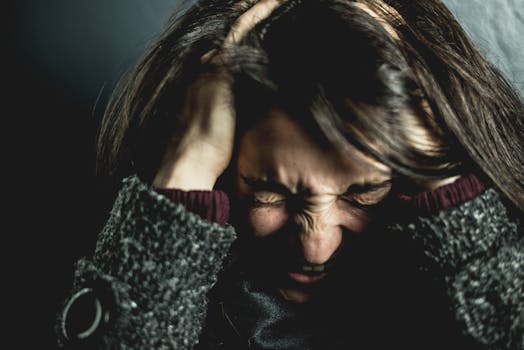
Unmasking the Anxious Mind: Understanding and Managing Anxiety Disorders
Anxiety. That familiar knot in your stomach, the racing heart, the overwhelming sense of dread. For many, it's a fleeting feeling, a response to a stressful situation. But for millions worldwide, anxiety becomes a relentless companion, manifesting as a diagnosable anxiety disorder. These disorders significantly impact daily life, affecting relationships, work, and overall well-being. Understanding the different types of anxiety disorders, their symptoms, and available treatments is crucial for navigating this challenging landscape.
The Diverse Landscape of Anxiety:
Anxiety disorders are not a monolithic entity. They encompass a range of conditions, each with its unique characteristics:
- Generalized Anxiety Disorder (GAD): This is characterized by persistent, excessive worry and anxiety about various aspects of life, lasting for at least six months. Individuals with GAD often find it difficult to control their worry and may experience physical symptoms like muscle tension, fatigue, and restlessness.
- Panic Disorder: This involves recurrent, unexpected panic attacks – sudden episodes of intense fear accompanied by physical symptoms such as a racing heart, shortness of breath, chest pain, trembling, and dizziness. The fear of future attacks can lead to significant avoidance behaviors.
- Social Anxiety Disorder (Social Phobia): This involves a persistent fear of social situations where the individual might be scrutinized or embarrassed. Even the thought of interacting with others can trigger intense anxiety and avoidance. Public speaking, meeting new people, and even eating in public can become incredibly challenging.
- Specific Phobias: These are intense, irrational fears of specific objects, situations, or activities (e.g., spiders, heights, flying). The fear is disproportionate to the actual danger and significantly impacts daily life.
- Obsessive-Compulsive Disorder (OCD): While technically a separate disorder, OCD is often grouped with anxiety disorders due to the significant anxiety it produces. OCD involves recurrent, intrusive thoughts (obsessions) that cause distress, leading to repetitive behaviors or mental acts (compulsions) aimed at reducing anxiety.
- Post-Traumatic Stress Disorder (PTSD): This develops after exposure to a traumatic event, such as war, natural disasters, or violent crime. Symptoms include flashbacks, nightmares, avoidance of reminders of the trauma, and persistent negative alterations in mood and cognition.
- Physical Symptoms: Rapid heartbeat, shortness of breath, sweating, trembling, dizziness, nausea, muscle tension, fatigue, sleep disturbances.
- Cognitive Symptoms: Excessive worry, racing thoughts, difficulty concentrating, feeling overwhelmed, fear of losing control, irrational fears, negative self-talk.
- Behavioral Symptoms: Avoidance of feared situations, restlessness, irritability, difficulty relaxing, compulsive behaviors.
- Therapy: Cognitive Behavioral Therapy (CBT) is a highly effective treatment for anxiety disorders. CBT helps individuals identify and challenge negative thought patterns and develop coping mechanisms for managing anxiety. Other therapeutic approaches, such as exposure therapy and acceptance and commitment therapy (ACT), can also be beneficial.
- Medication: In some cases, medication may be prescribed to help manage anxiety symptoms. Antidepressants, particularly selective serotonin reuptake inhibitors (SSRIs) and serotonin-norepinephrine reuptake inhibitors (SNRIs), are often used. Anxiolytics, such as benzodiazepines, may be prescribed for short-term relief of severe anxiety but should be used cautiously due to potential for dependence.
- Lifestyle Changes: Lifestyle modifications can significantly support anxiety management. These include regular exercise, a healthy diet, sufficient sleep, mindfulness practices (such as meditation and yoga), and limiting caffeine and alcohol consumption.
Recognizing the Symptoms:
The symptoms of anxiety disorders can vary widely, but some common indicators include:
Seeking Help and Treatment Options:
If you suspect you or someone you know may have an anxiety disorder, seeking professional help is crucial. Effective treatments are available, including:
Breaking the Cycle:
Living with an anxiety disorder can be challenging, but it's essential to remember that you're not alone. With the right support and treatment, it's possible to manage symptoms, reduce their impact on your life, and lead a fulfilling life. Don't hesitate to reach out to a healthcare professional or mental health specialist. Taking that first step is a sign of strength and can be the key to unlocking a calmer, more manageable future. Early intervention is key to preventing anxiety from becoming debilitating. Remember, help is available, and recovery is possible.
Keywords: Anxiety disorders, Generalized Anxiety Disorder (GAD), Panic Disorder, Social Anxiety Disorder, Specific Phobias, Obsessive-Compulsive Disorder (OCD), Post-Traumatic Stress Disorder (PTSD), CBT, therapy, medication, anxiety symptoms, anxiety treatment, mental health, mental wellbeing.


